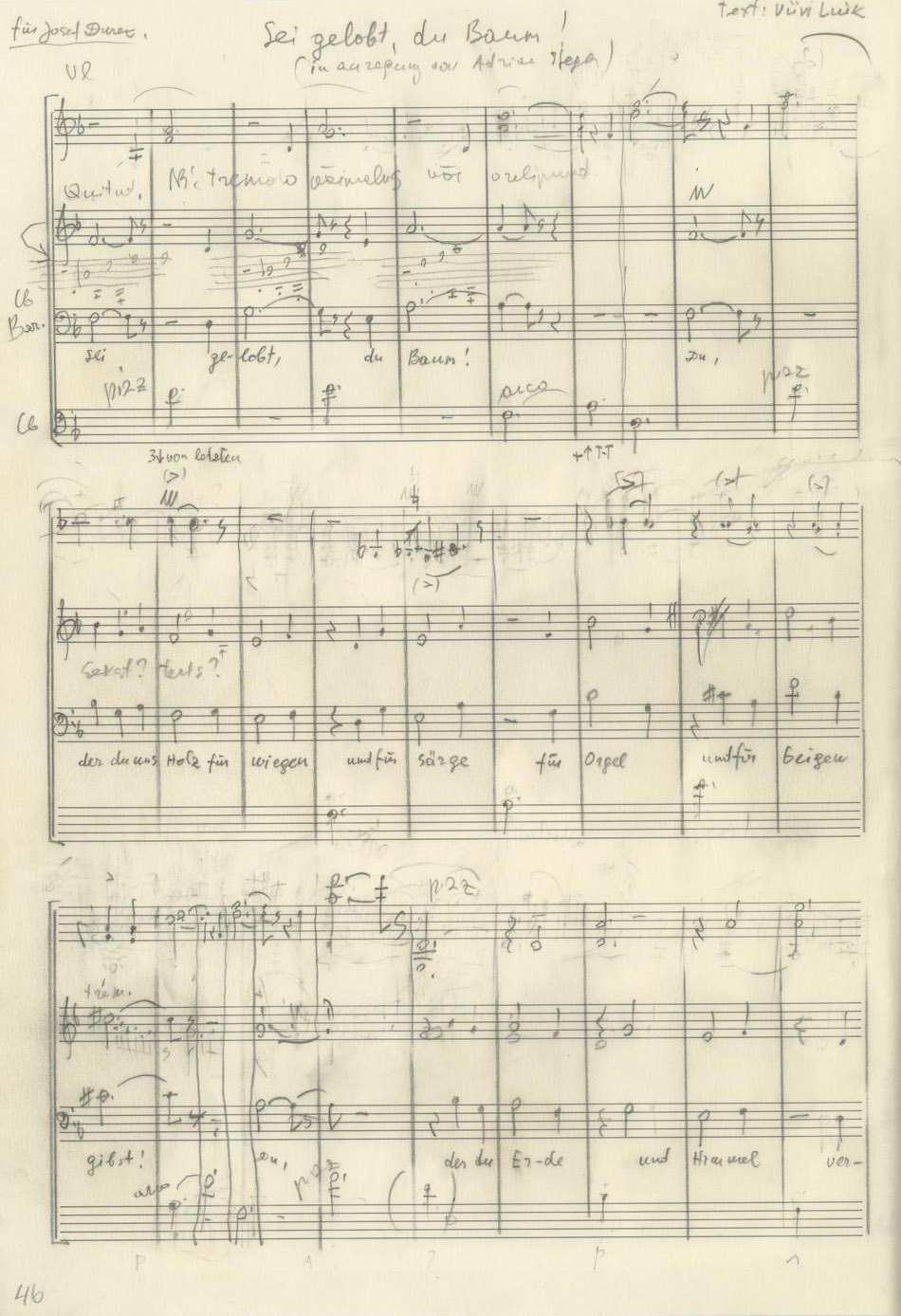Scored for
Duration
3 min
Short description
In 1962, during the construction of a well at the Tschäpperli vineyard owned by the Blarer family in Aesch, Switzerland, the trunk of an old white fir tree was dug out of the ground from a depth of 2‒3 metres. In 2006, the age of this tree was analysed, and it turned out that this 200 years old trunk it had been in the ground from 314–234 years BC. Presumably, the tree cracked as a result of a landslide and was covered with clay and mud, providing extremely good conditions for its preservation. Two musical instruments were made from this over 2000 years old tree – the idea to make a baroque violin came from the Blarer family; the other part of the tree was donated to the Willisau collection of musical instruments, at whose initiative a quintern was made.
A quintern is a relati…

Vox Clamantis, Mari Poll (violin), Taavo Remmel (contrabass), Robert Staak (lute), Jaan-Eik Tulve (conductor). CD The Deer's Cry. ECM New Series 2466
© ECM Records
World premiere
Concert: Abendmusiken und Musikinstrumenten-Sammlung
Derek Lee Ragin (baritone), Maya Homburger (violin), Peter Croton (quintern), Barry Guy (doublebass)
Completion year
Scored for
Duration
Publishers
Language
Instrumentation details
Vocal text
Sei gelobt, du Baum!
Du, der du uns Holz für Wiegen und für Särge,
für Orgel und für Geigen gibst!
Du, der du die Erde und Himmel vereinst.
Sei gelobt.
Jeder einzelne Baum auf Erden,
jeder einzelne Baum,
auf Erden.
Hail thee, thou tree!
Thou who gives us wood for cradles and for coffins,
for organ and for violins!
Thou who joins the earth and sky together.
Hail thee.
Every single tree on the earth,
every single tree,
on the earth.
Translation by Reet Sool

